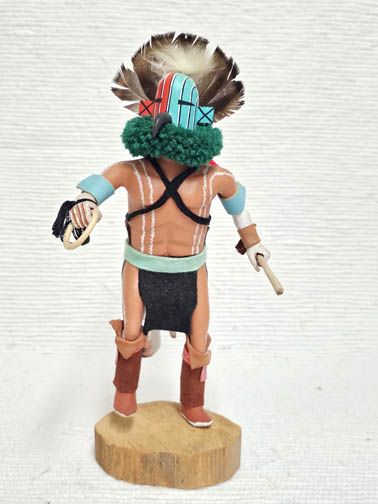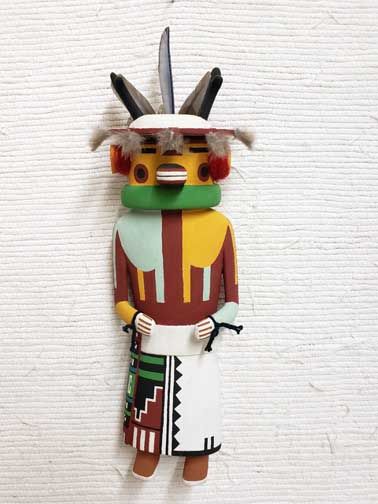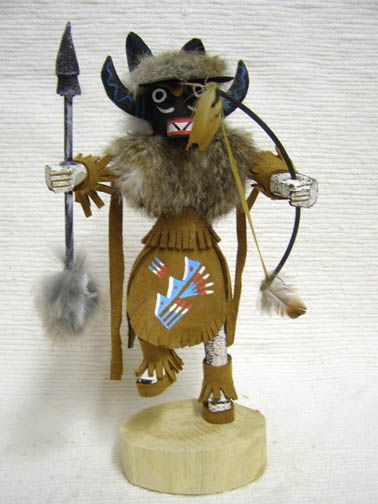
Collecting Katsinam and Kachina dolls is a wonderful way to celebrate and honor Native American heritage. These intricate and culturally significant carvings hold deep spiritual and historical meaning. However, it is crucial to identify Katsina dolls correctly to ensure their authenticity and appreciate their true value. In this guide, we will explore various aspects of identifying Katsina dolls, focusing on the differences between Puebloan and souvenir ones.
Understanding the Terms: Katsina vs. Kachina
Before we delve into the details of identification, it’s important to clarify the terminology. The official term is “Katsina,” from the Hopi language. However, it is often written phonetically as “Kachina.” For the sake of this guide, we will use “Katsina” to refer to dolls made by the Hopi and other Puebloans , and “Kachina” to refer to dolls made by others.
Identifying the Tribal Origin of a Doll
The first step in identifying a Katsina doll is determining its tribal origin. Katsina dolls are predominantly created by the Hopi and the Zuni. Navajo also produce a version. Hopi Katsina dolls are typically carved from a single piece of cottonwood root and exhibit fine details and vibrant colors. In contrast, Navajo Kachinas are carved from various types of wood and often feature accessories made from feathers and fabric, and their style can be less intricate.
Identifying Antique Hopi Katsinam

Antique Hopi Katsinam, usually dated before the 1940s, has distinct characteristics. Some of these carvings are quite large, they are called “the monumentals.” It is a size of carving that is not seen much today. These dolls often have a patina that comes with age, and the paint may show signs of wear. The carving style is generally more simplistic than modern versions, reflecting the traditional methods used during that period. The pieces might be decorated with leather, fabric, fur, and beading.
Identifying Hopi Old Style Katsinam

Old Style Katsinam or Traditional are created in a way that mimics the appearance of pre-1930s dolls. They often feature muted colors and less intricate carving, capturing the essence of the older, more traditional Katsinam. Recognizing these involves understanding the historical context and comparing them to documented examples from that era. These are the carvings that are found in a Hopi home and are handed out at the dances. These carvings are educational tools for the children to teach them about the Katsinam and their role in Hopi life. The Hopi consider these carvings “more spiritual” than the contemporary full figure pieces on bases.
Identifying Navajo Kachinas

Navajo Kachinas are distinct from Hopi Katsinam in several ways. They are created from multiple pieces of any kind of wood, the body parts are sometimes machine made. They often include fabric clothing and accessories like feathers and beads. The carving style can be less refined, and the dolls may lack the symbolic accuracy seen in Hopi creations. However, they hold their own cultural significance and should be appreciated as such.
Beware of Cheap Assembly Line Dolls
It’s important to be aware of cheaply made, mass-produced dolls that are often marketed as Native American Kachina dolls. These are typically found in gas stations, tourist shops, and online marketplaces. These dolls are often made from inferior materials, lack the intricate details of authentic Katsina or Kachina dolls, and are not crafted by Native American artisans. They might be imported or produced on assembly lines, which diminishes their cultural and artistic value. Authentic Katsina and Kachina dolls are handcrafted and hold spiritual significance, so it’s essential to purchase from reputable sources to ensure authenticity.
Conclusion
Identifying authentic Katsina and Kachina dolls requires some research, a keen eye, and an understanding of the cultural and historical context in which they were created. By paying attention to details like carving style, materials, and tribal origin, collectors can ensure they are acquiring genuine pieces of Native American art.
Explore the vast collection of authentic Katsina and Kachina dolls online at Kachina House and bring home a piece of this rich cultural heritage.

